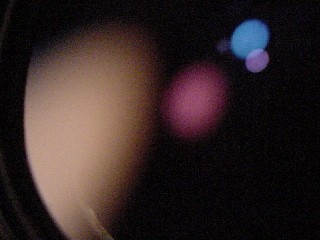| PAST |
February 12, 2006 |
NEXT |
|
Photographical Sunday |
 |
|
* Technology * |
This is a close up shot of the surface of a Carl Zeiss lens on a Sony digital camera, producing an interesting effect from the reflections of light on the lens. The internal filters in the lens assembly itself reflect the various different colors here.
Digital cameras have totally changed the
face and industry of photography. With more and more mega-pixels of resolution,
it seems that we have become so much closer to conventional photography than
many had ever speculated or envisioned. But the higher mega-pixels is not
necessarily the answer.
While so many digital camera manufacturers boast more and more mega-pixels, the
consumer has been blindly chasing that product, not even realizing that it
doesn't matter if you have the most mega-pixels, if you don't have a good
quality lens to take in the image.
Just like a conventional camera, if the lens quality is not all that good, then the image will not be either. The image can only be as good as the focus that can be created and transferred to the surface of the CCD (Charge Couple Device). * This is the semiconductor device with which the image is projected on to and converted into a digital format.
So, just like projecting an image on to a wall, if the lens is not in focus, then the picture quality will be diminished and poor. With many of the digital cameras on the market, smaller is not necessarily better. As a matter of fact, it is much more difficult to manufacture a quality lens, in such a smaller design. And, of course, camera manufacturers are trying to produce a product at a much lower cost.
So, basically, they build the camera with a cheap lens, while boasting more mega-pixels. Which might be compared to a better picture for your television, but only black and white. Then the quality just doesn't matter.
So when purchasing a digital camera, do
the research and investigate the quality of the camera.
And focus (pardon the pun)
on the lens.